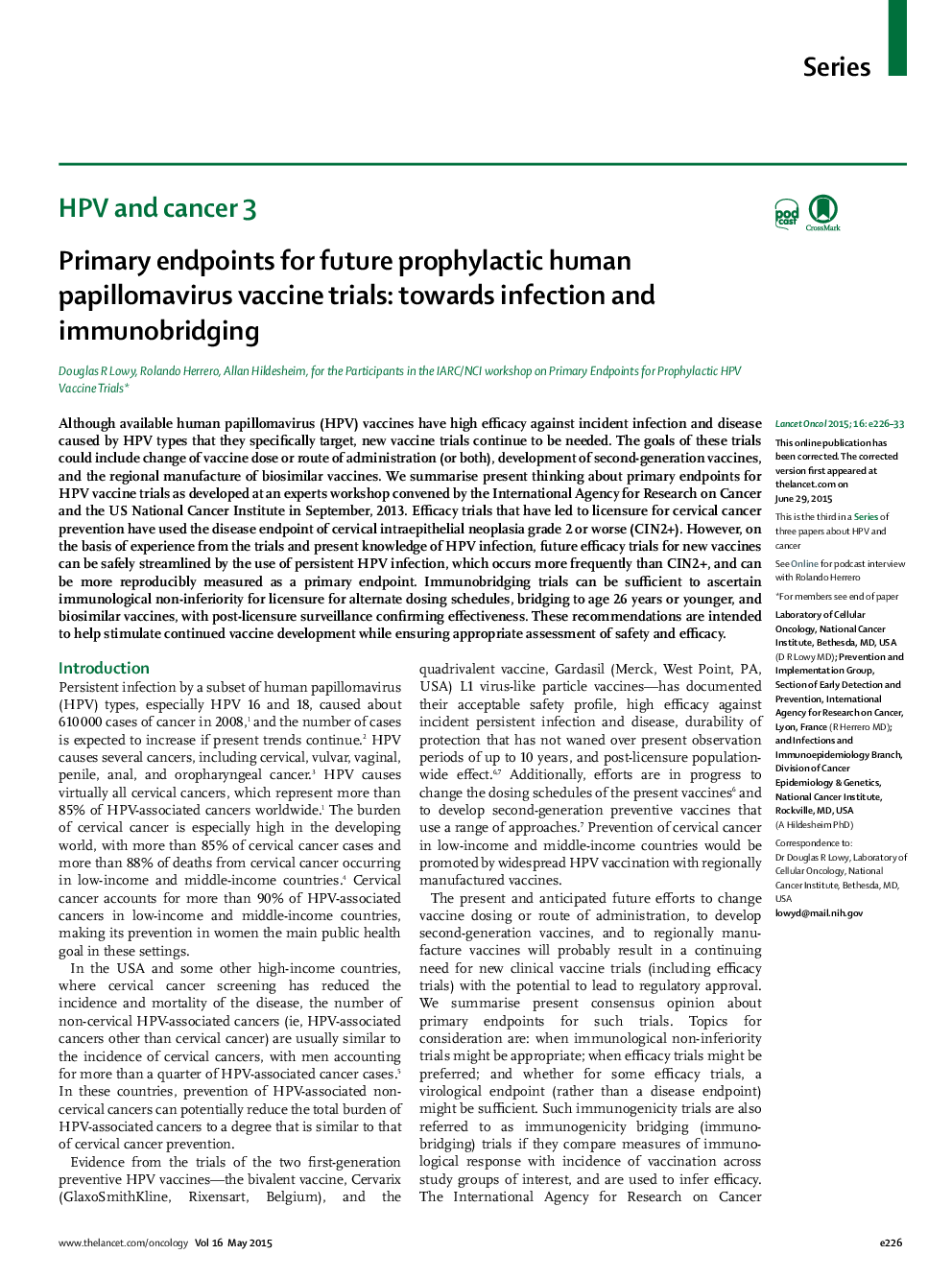| Article ID | Journal | Published Year | Pages | File Type |
|---|---|---|---|---|
| 3994008 | The Lancet Oncology | 2015 | 8 Pages |
SummaryAlthough available human papillomavirus (HPV) vaccines have high efficacy against incident infection and disease caused by HPV types that they specifically target, new vaccine trials continue to be needed. The goals of these trials could include change of vaccine dose or route of administration (or both), development of second-generation vaccines, and the regional manufacture of biosimilar vaccines. We summarise present thinking about primary endpoints for HPV vaccine trials as developed at an experts workshop convened by the International Agency for Research on Cancer and the US National Cancer Institute in September, 2013. Efficacy trials that have led to licensure for cervical cancer prevention have used the disease endpoint of cervical intraepithelial neoplasia grade 2 or worse (CIN2+). However, on the basis of experience from the trials and present knowledge of HPV infection, future efficacy trials for new vaccines can be safely streamlined by the use of persistent HPV infection, which occurs more frequently than CIN2+, and can be more reproducibly measured as a primary endpoint. Immunobridging trials can be sufficient to ascertain immunological non-inferiority for licensure for alternate dosing schedules, bridging to age 26 years or younger, and biosimilar vaccines, with post-licensure surveillance confirming effectiveness. These recommendations are intended to help stimulate continued vaccine development while ensuring appropriate assessment of safety and efficacy.
